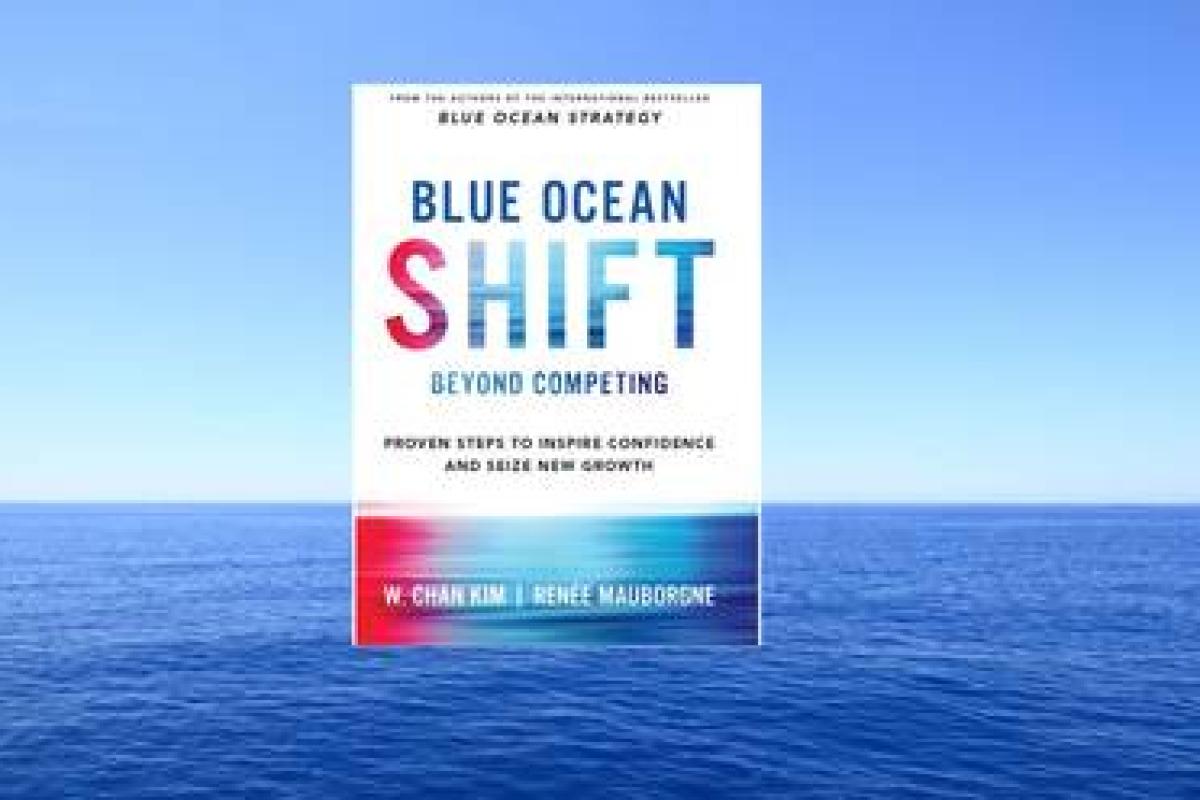Blue Ocean Shift claims to be “THE definitive guide to shift you, your team, and your organisation to new heights of confidence, market creation, and growth”. That’s a pretty big claim, but the authors Kim & Mauborgne are professors of strategy at INSEAD and co-directors of the INSEAD Blue Ocean Strategy Institute & have excellent pedigree. Back in 2005, they wrote Blue Ocean Strategy (it sold over 3.5 million copies and has become a strategic management classic). It introduced the concept of red oceans (highly competitive, shrinking profit pools) & blue oceans (uncontested market space ripe for explosive growth). The key question they asked themselves was “how can we break out of this red ocean of bloody competition and generate strong, profitable growth? What does it take to reach beyond the best, to create new market space and make the competition irrelevant?”
This book, Blue Ocean Shift is a direct response to those organisations (B2C, B2B, public, non-profit & government) that found the transition from red to blue ocean to be more challenging than they first thought. Lots of organisations that found themselves stuck in red oceans blamed bureaucracy, traditional thinking and a lack of creativity.
The essence of this book is to introduce 5 steps to making a blue ocean shift. Of course, recognising that your organisation (or department, brand) is trapped in a red ocean is a critical first step, but the ability to identify and reach a blue ocean requires a change in mindset and capability (by no means easy). I’m always reminded of the quote attributed to Einstein: “We cannot solve our problems with the same thinking we used when we created them.” The authors claim that if you follow the five steps outlined below you will be able to create and capture a blue ocean.
Get Started.
“Energy flows to where attention goes”. A startup or a single product/service organisation doesn’t have the same issue here as an existing organisations with multiple offerings, choosing the right scope is not straightforward. The authors provide a tool called the pioneer-migrator-settler map to help with this. Building the right team to lead is critical to the success. Human dynamics is something many leaders gloss over. This move requires a balance between representation from functional departments and the right mix of openness and engagement of all team members.
Get clear about the current state of play.
The authors advocate creating a strategy canvas (“a one-page visual analytic that depicts the way the organisation configures its offerings to buyers in relation to those of its competitors”). This strategy canvas (which is similar to a SWOT) serves a vital role in getting everyone on the same page before taking the creative step of building a blue ocean.
Imagine where you could be.
It is a struggle for well established companies to question their existing category definition. The authors propose trying to uncover the hidden pain points that existing industries imposes on buyers – it’s necessary to look through your buyers’ eyes. They suggest these can provide valuable insights into new opportunities. They also introduce the concept of the total demand landscape – and the idea of not just seeking to steal the customers of your competitors but identifying non-customers who represent a new stream of demand and future growth potential.
Find out how to get there.
The authors offer six different paths to redraw established boundaries and create your blue ocean. (a) look across alternative industries; (b) look across strategic groups within your industry; (c) look across the chain of buyers and redefine the industry buyer group; (d) look across complementary product and service offerings; (e) rethink the functional-emotional orientation of the industry and (f) participate in shaping external trends over time.
Make your move
The final step is to host a “blue ocean fair”. This involves the team creating a one page strategy canvas for each potential ocean, detailing the current reality and the proposed blue ocean offering including the “leap in value” that will be created. Feedback should be calibrated and the decision is made on which strategic move to pursue.
Those who know me well, know I have an expensive habit in consuming non-fiction books It’s fair to say that Blue Ocean Shift is a must-read manual for those who are seeking to grow their businesses. The authors offer extremely robust examples throughout the book to help you, the reader, navigate towards your blue ocean at minimal risk. Enjoy it and work smarter.
Blue Ocean Shift: Beyond Competing. A book review by Mick Doran, Head of Research, Planning & Brand; Sainsbury’s Bank & Chair of the Marketing Society Scotland.



